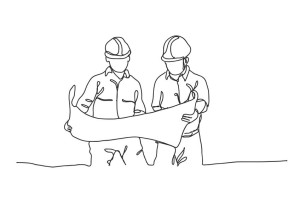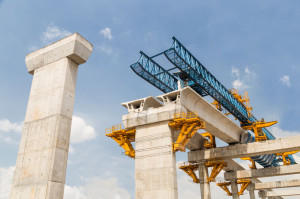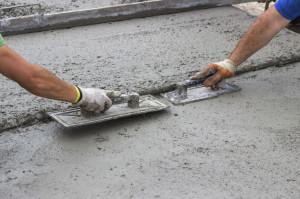Construction, Architecture, and Engineering Starts in 2022 and 2023
As one of Utah’s top civil and structural engineering, roofing, paving, and laser scanning companies, the vast majority of our work takes place in concert with the construction sector. As such, we pay close attention to the ups and downs that take place in the construction industry. So, as we close out 2022, a big question on everyone’s mind is, what will 2023 bring? Today, we will take a deep dive into what we expect the future to hold for the construction sector, both here in Utah and beyond.
 How Have the U.S. Construction and Civil Engineering Sectors Fared in 2022?
How Have the U.S. Construction and Civil Engineering Sectors Fared in 2022?
In short, the construction sector is going to go through some rough spots, but it will come out resilient on the other side. The industry will continue to face labor shortages, high materials costs, and other headwinds, but infrastructure will be a bright spot. With the massive infrastructure bill working its way through the economy, construction spending on infrastructure jobs will only rise further. Still, with 2022 being a mixed bag for the construction industry, there are lots of unknowns.
Economic shocks of various types and severities have defined 2022. Since the COVID-19 pandemic, there has been one hit after another. This past year brought skyrocketing inflation and interest rates. But as people cope with higher prices, they make cuts elsewhere. Fortunately for construction professionals and civil engineers, there is reason to be optimistic about the state of the economy, despite the rocky economic conditions.
Inflation has been a major concern in 2022, climbing to a 40-year high in June. Economists across the board fretted over the state of the economy and the resiliency of the American consumer. The problem was multi-faceted. It was fueled by ongoing supply chain bottlenecks brought on by pandemic stresses as well as Russia’s unprovoked aggression in Ukraine. Commodities went through the roof and, as a result, prices jumped on key construction materials. Everything from cement to diesel fuel and asphalt – prices rose dramatically. The industry also continued to struggle to attract enough workers in an overall tight labor market.
As the new year approaches, the big question on construction leaders’ minds is what’s in store for 2023. Top construction economists say it’s hard to say. The picture is muddied by a variety of factors. But what are those factors? Let’s dig a little deeper.
What are Architects Up To?
There is a common thread in the construction sector. When architects have work, so do contractors, civil engineers, structural engineers, roofers, and so on. Those who design the structures we build every day represent the foundation of the construction job. When architects are busy, so are contractors and civil and structural engineers. The good news is architecture industry performance remained positive in 2022. The bad news hit in October when it took a sharp downward turn. What does that mean? In short, it could indicate that recession fears and inflation have finally started to appear in the construction and civil engineering sectors. As a result, this may translate to a drop in available construction work at the latter end of next year.
How is the Construction Backlog?
New construction starts are important and act as a bellwether for contractor and engineer confidence. The construction industry’s backlog has remained positive over the past year but dipped in June and July and declined again in October from the previous month. Still, it is higher than it was in the same period one year ago. We aren’t in a horrible position, from a national or local perspective.
Backlog in the commercial construction vertical posted its largest monthly decline in October since July 2020. That’s a big dip. The bright spot? Infrastructure and heavy industrial projects posted growth, despite the decline in commercial construction starts. Even better, the infrastructure and heavy industrial verticals will likely remain bright spots in the coming years as federal funding continues to flow into those sectors.
In general, most economists and industry insiders expect a big pickup in construction starts, civil engineering jobs, and other growth associated with increasing development. As money from the infrastructure bill starts to be awarded and contractors get to work on those projects, we will see a big uptick in the sector. Could this mean inflation drops even as we avoid a recession?
We’re also going to see big pickups in manufacturing construction, especially for semiconductor manufacturing plants. The CHIPS Act has unleashed a wave of investment in giant semiconductor factories. We’ll also see increased electric vehicle, battery, components, and battery charging manufacturing plant production. And finally, expect to see renewable energy projects funded by tax credits and other incentives included in the Inflation Reduction Act to blossom across the country.
Here at McNeil Engineering, we are excited to see this growth and economic activity both here in Utah and across the country. In the end, 2023 may be better than expected. If we can see inflation drop and interest rates drop without a recession, we’ll be in a good place. We’ve got a positive outlook. Here’s to a bright 2023!









